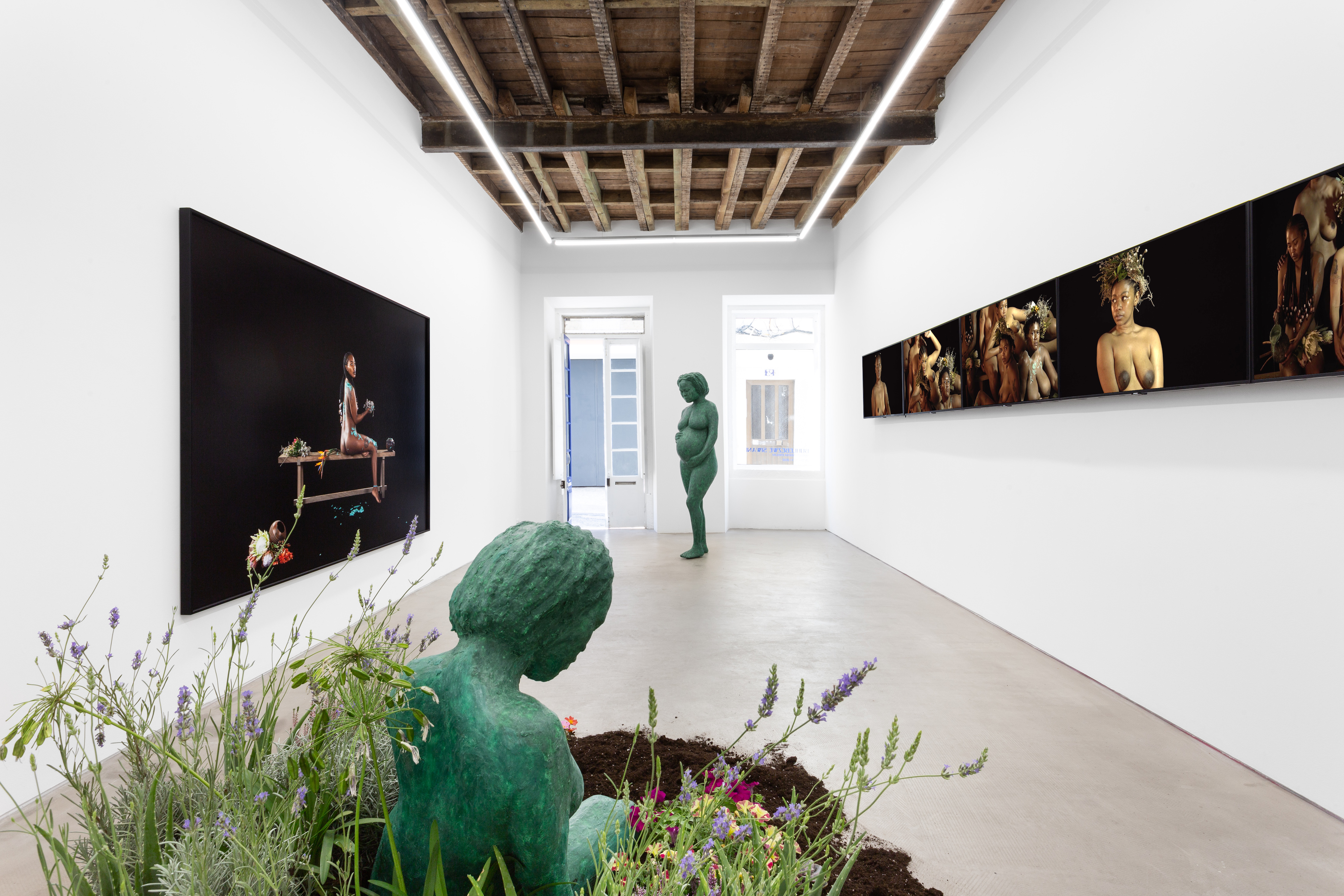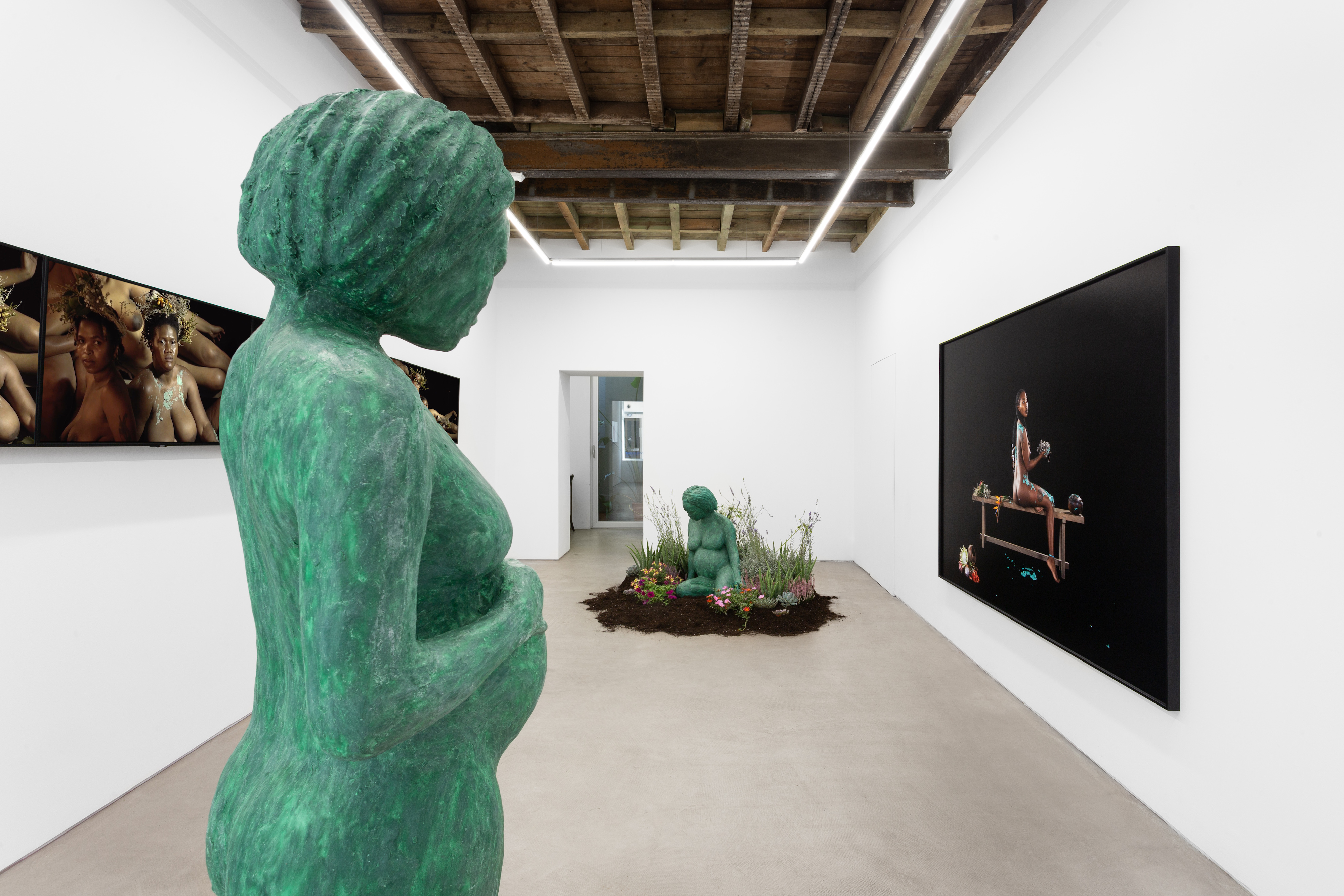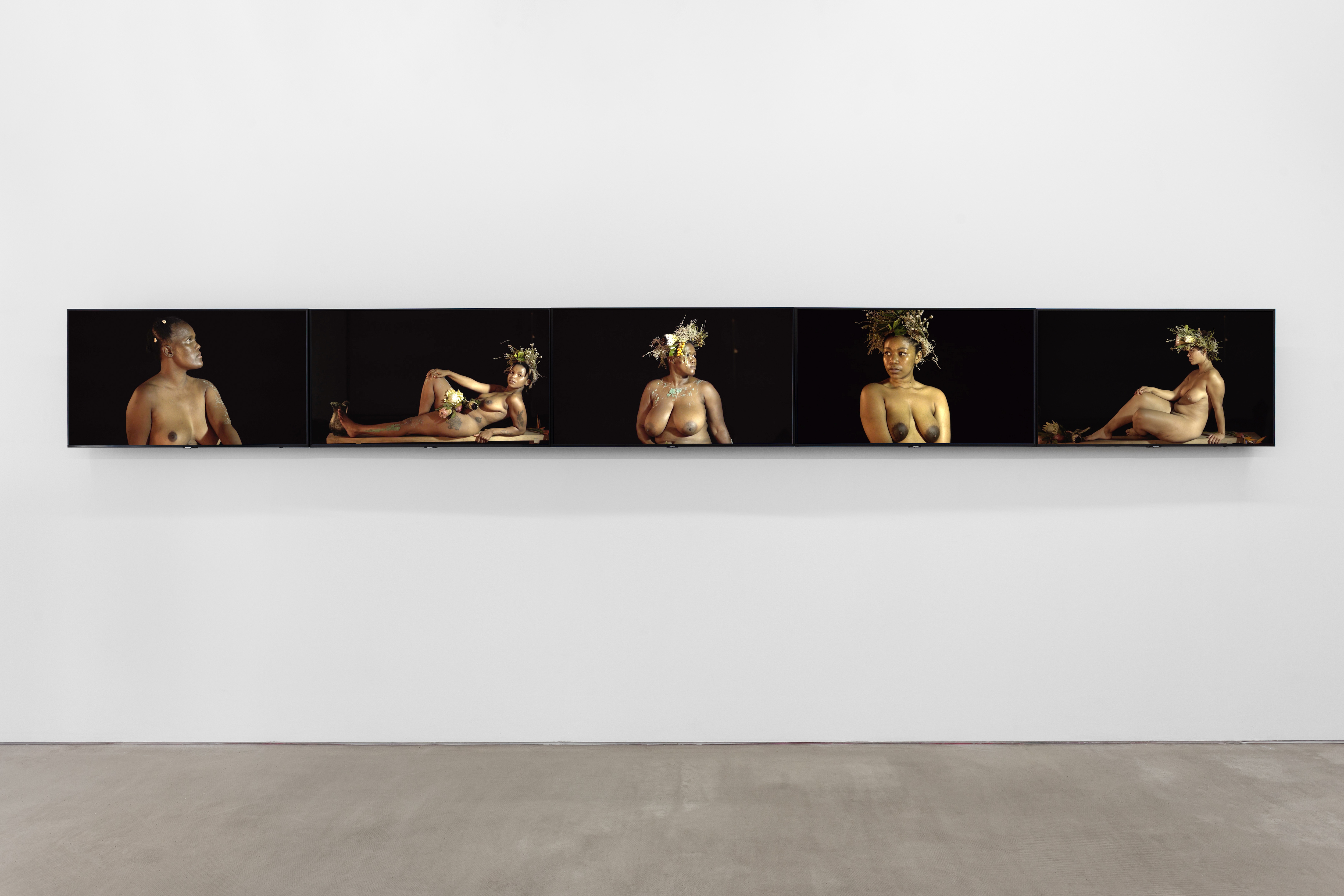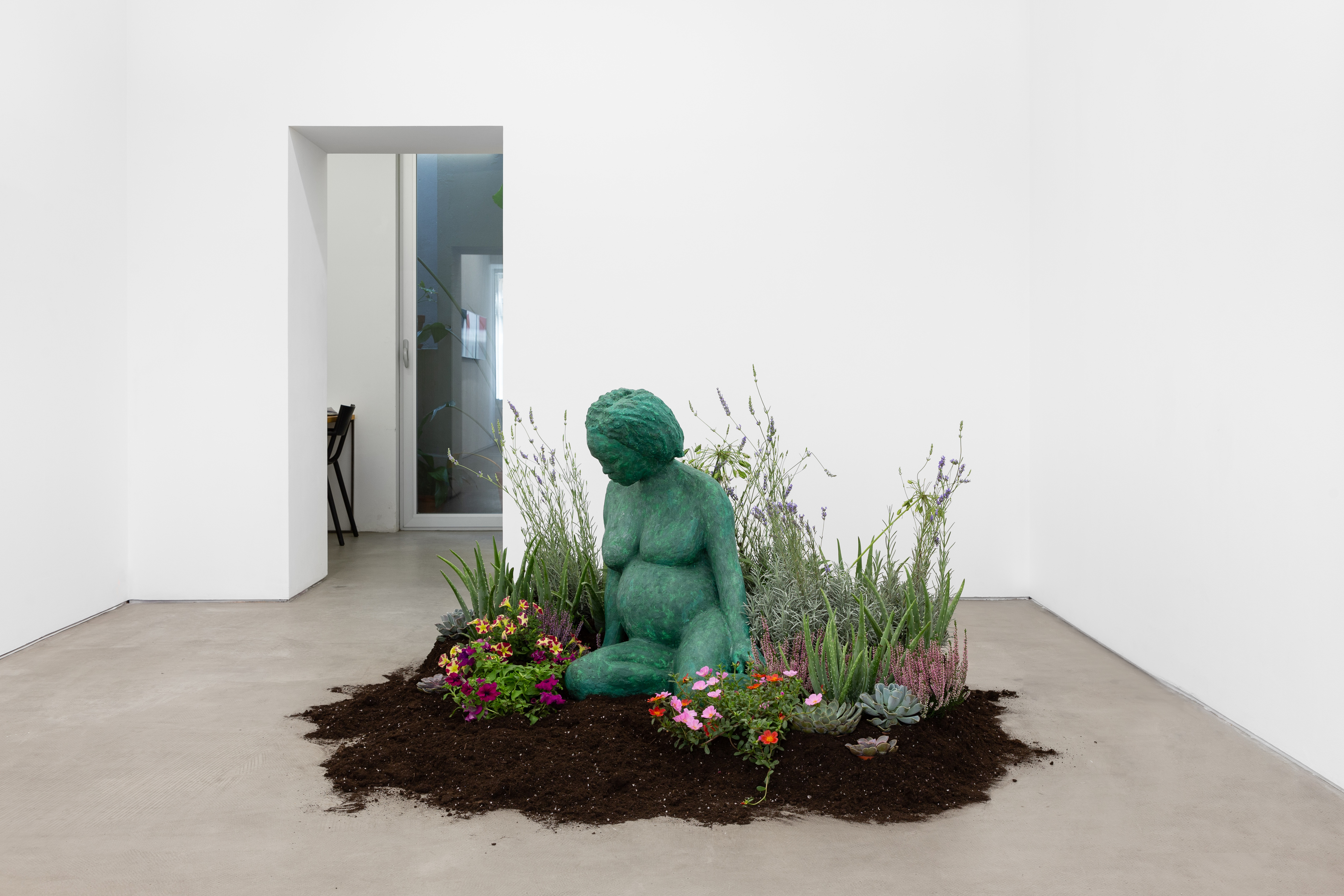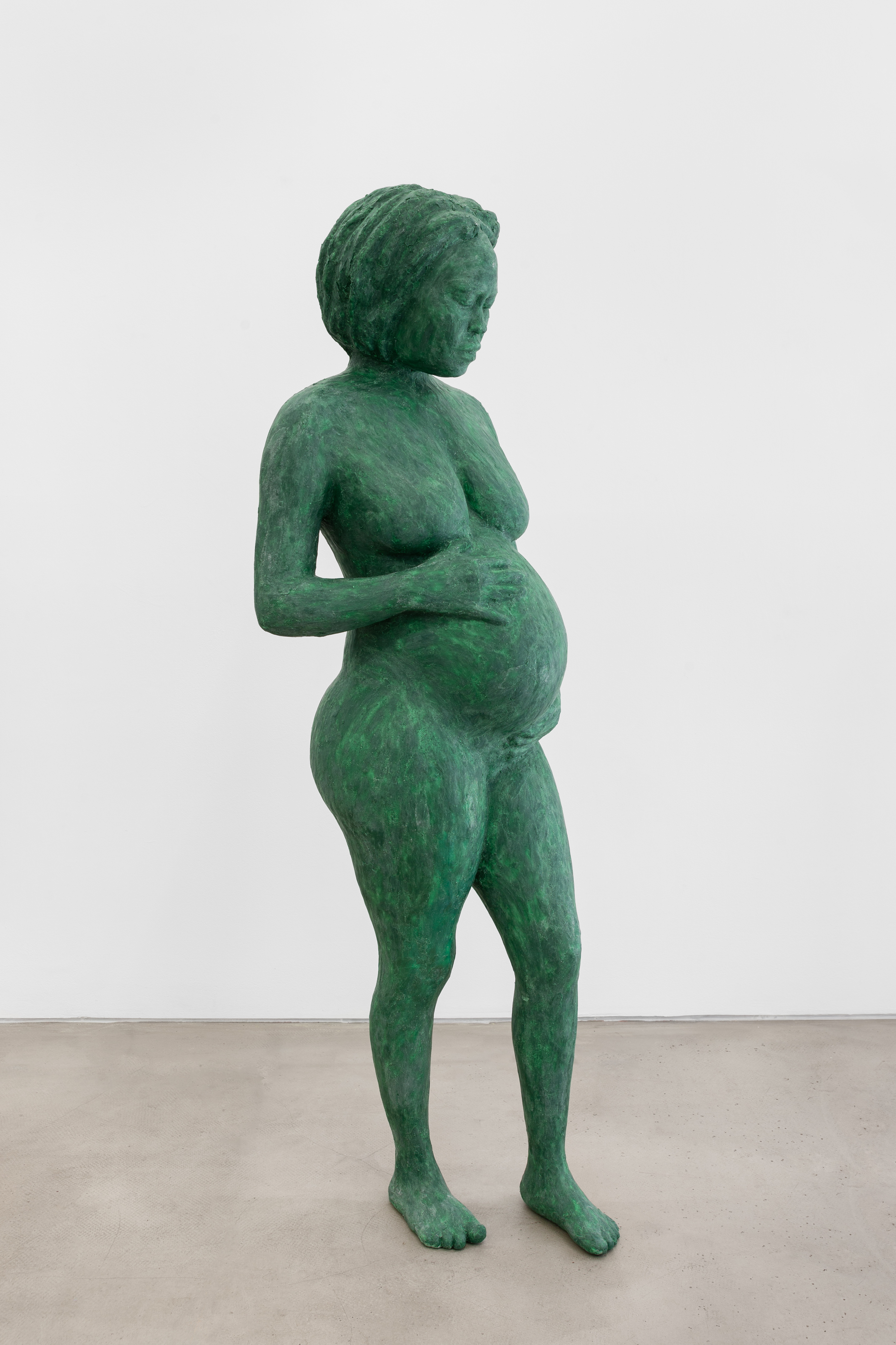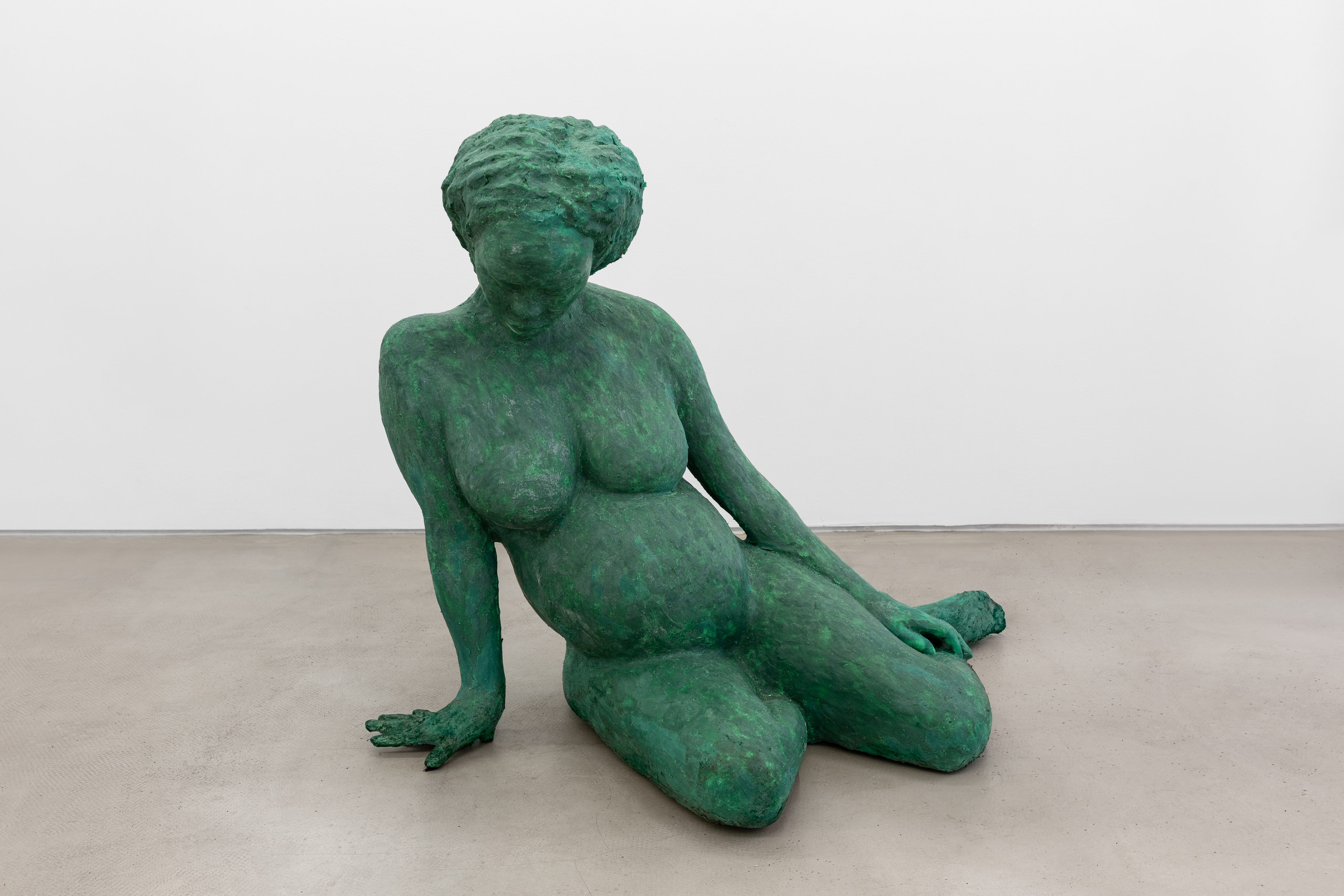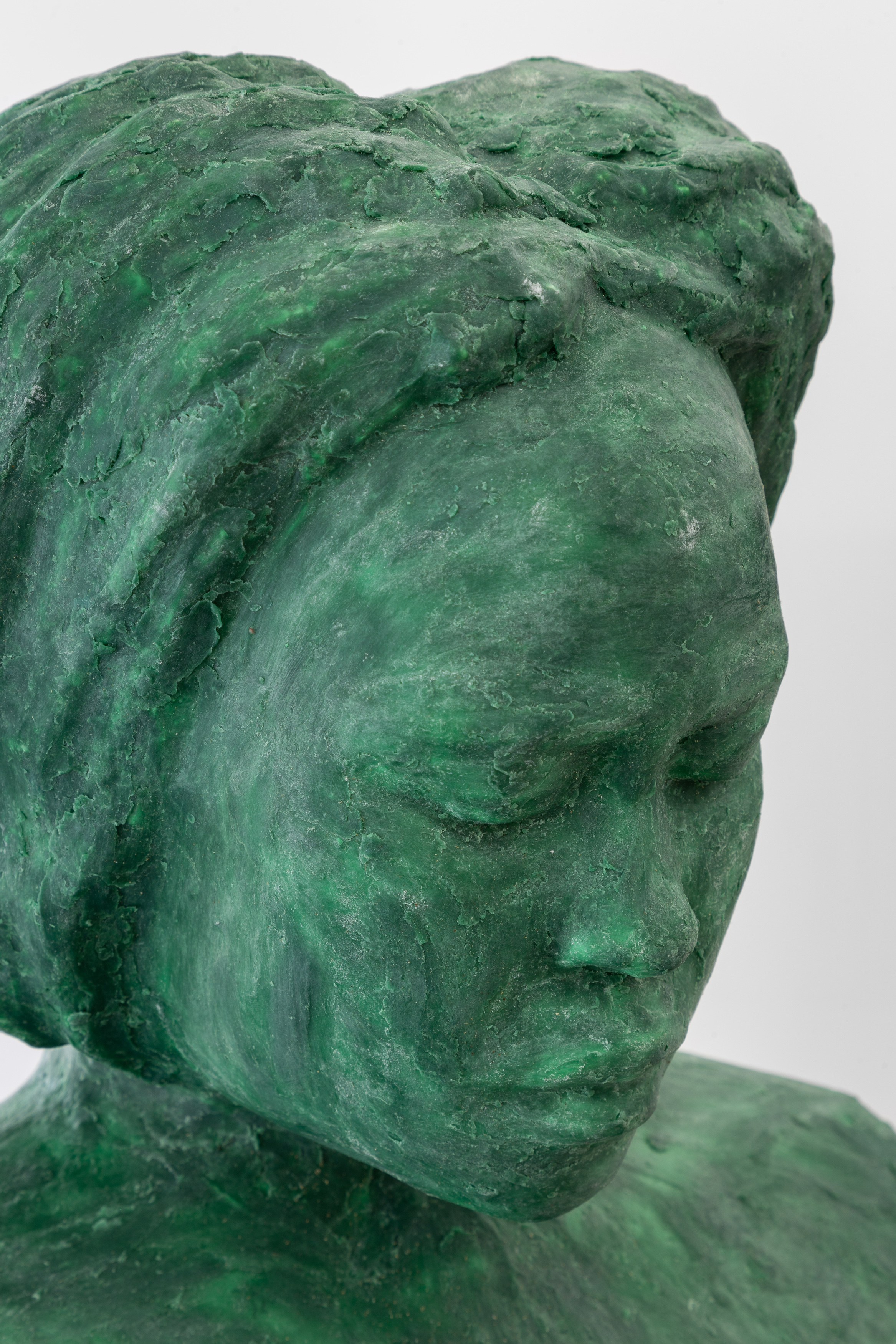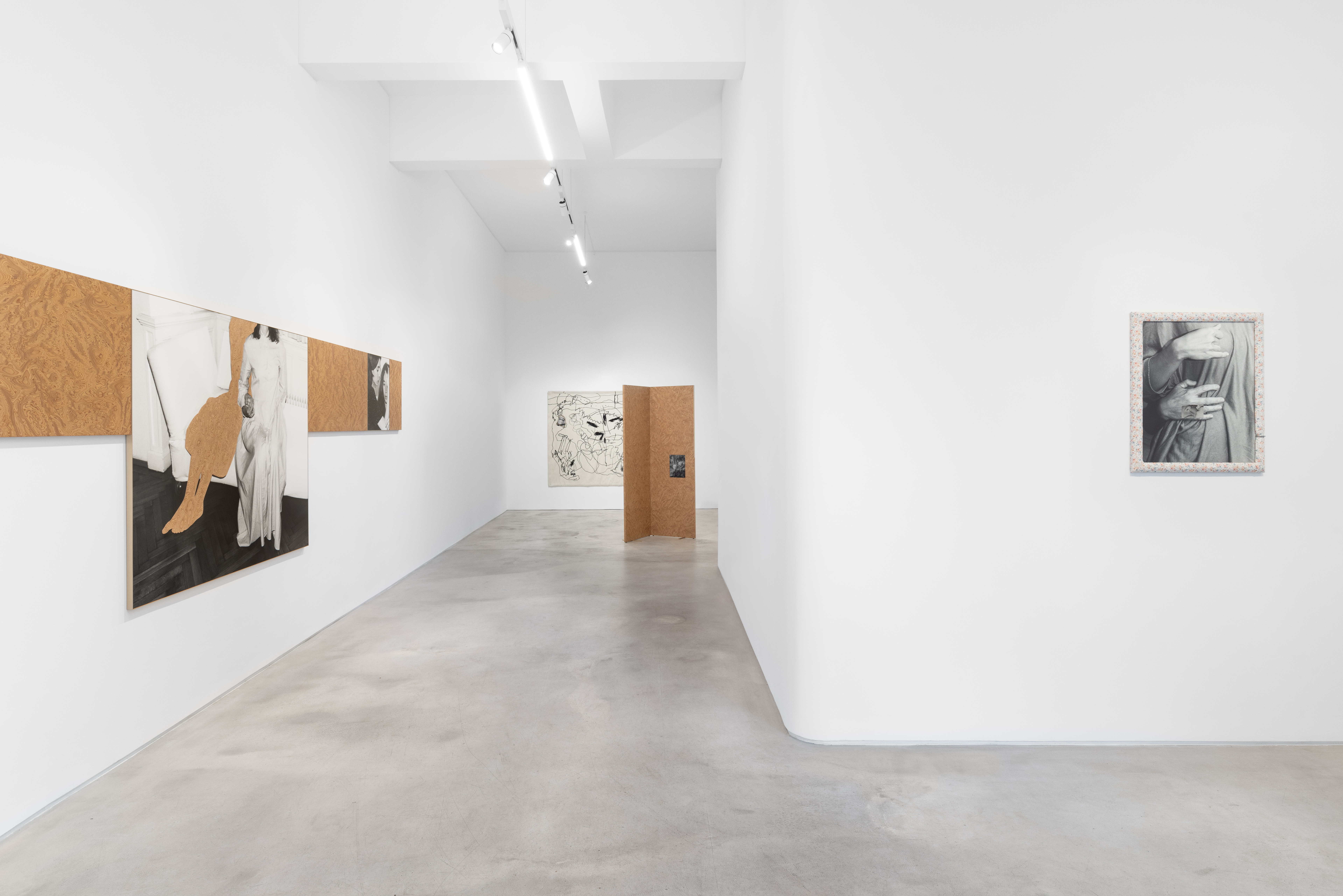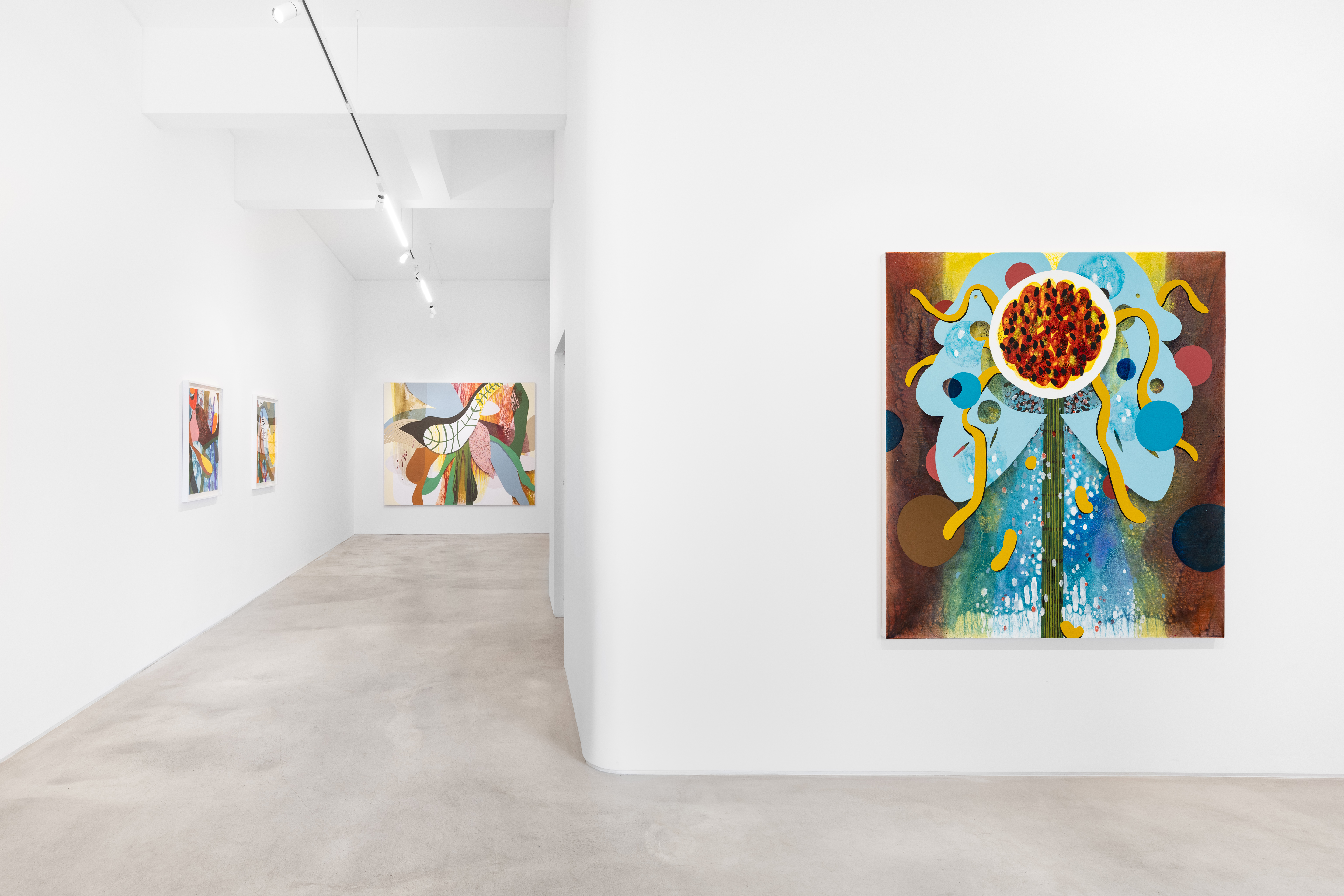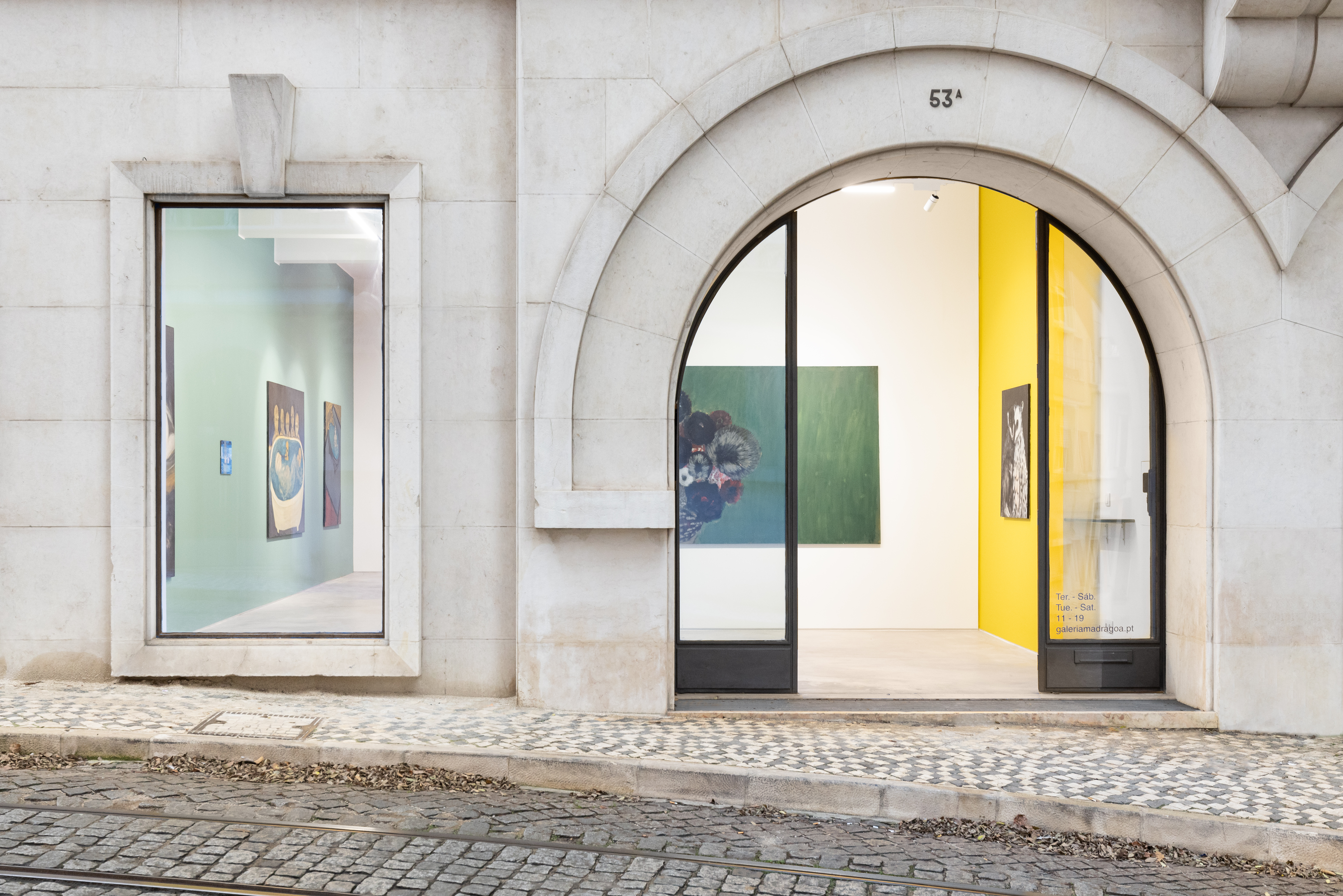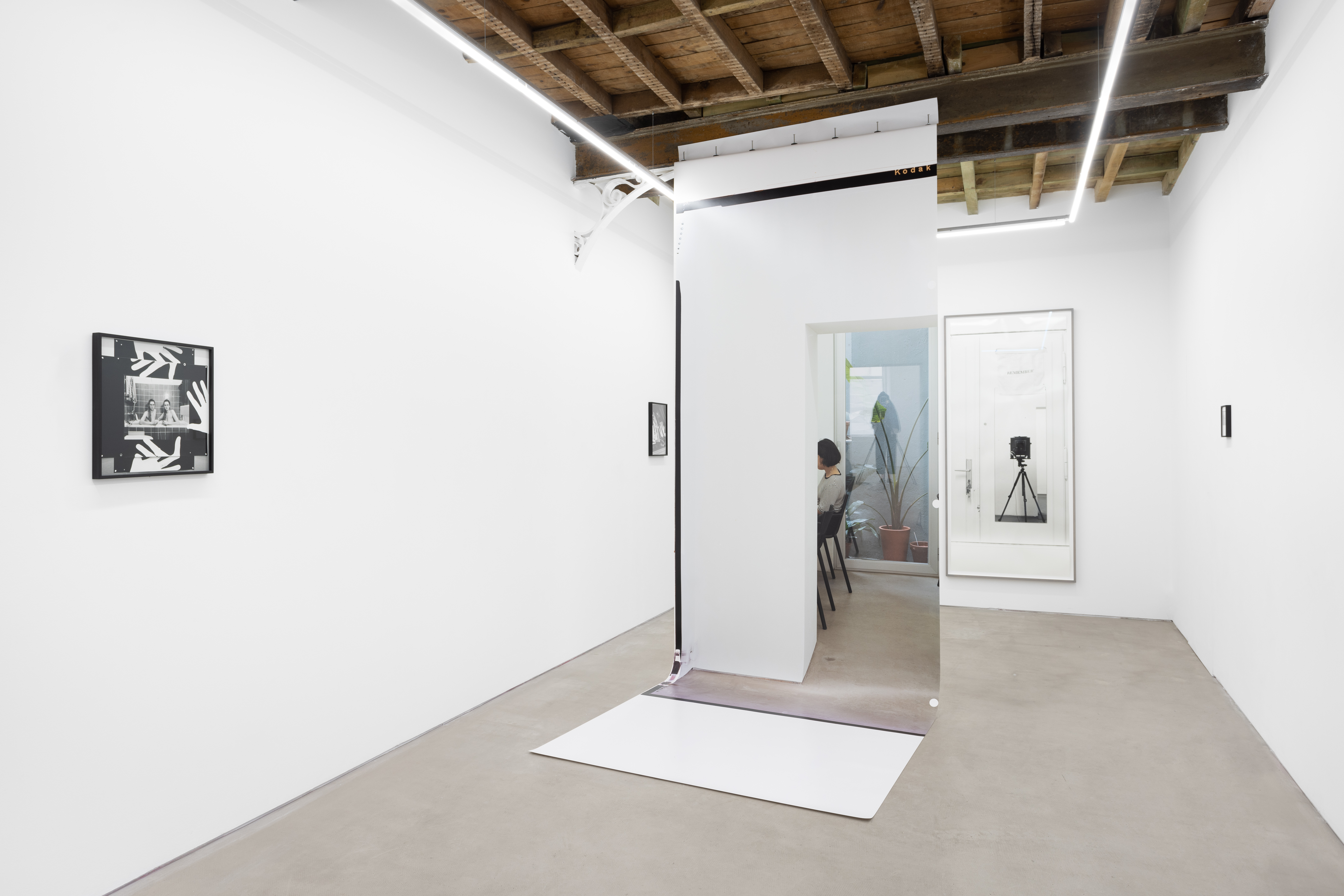Amanzi angena endlini
September 21–November 13, 2022
Rua dos Navegantes 53A
1200-730 Lisbon Lisboa
Portugal
Hours: Tuesday–Saturday 11am–7pm
T +351 961 190 165
info@galeriamadragoa.pt
Madragoa is delighted to present Amanzi angena endlini, the third exhibition of Buhlebezwe Siwani (b. 1987, Johannesburg) at the gallery.
Grossly overlooked in dominant Western art history, Black bodies were anonymous and relegated to the background until very recently. And if they couldn’t be invisible, they were whitewashed, as in the Renaissance’s painting by Piero di Cosimo’s "Perseus Freeing Andromeda" (c. 1510), where Andromeda, a notably dark-skinned Ethiopian princess, is represented as a white woman. Also rarely researched, studied, or written about, Black characters in artworks were de facto discarded. For instance, we only learned in this century the name of Manet’s Black model in “Olympia”–her name was Laure. Medical illustrations too have been lacking in diversity, it’s only at the end of last year that a Nigerian medical student and illustrator, Chidiebere Ibe, went viral on social media for his drawing of a Black foetus. Lack of representation of Black bodies, or Black artists, especially women, are only part of what the consequences of the Western-Christian-colonial-influenced environment we live in imposed on all the areas of our lives. These Black bodies, as active subjects of history and contemporary times, is who we are invited to consider when approaching the layered work of Johannesburg-born multidisciplinary artist, activist, and traditional healer Buhlebezwe Siwani.
Another overlooked subject since the middle ages and up to the Renaissance, which is alluded to in Siwani’s work is pregnancy. Albeit rare, they have all been of the virgin Mary. In some, like in Dutch painter Hugo van der Goes’s “Vienna Diptych” (c. 1479), it is Eve who we see pregnant, although in association with her grabbing the infamous apple she tempted Adam with. Images of pregnant women throughout the 18th and 19th centuries appear to be even more scarce, before reappearing in the 20th and 21st centuries. However, seldom are they made by women, and even more rarely by, or of, women of colour or Black women. In popular culture, there was this stunning yet controversial moment when Demi Moore appeared naked, cradling her bump on the cover of Vanity Fair in 1991, photographed by Annie Leibovitz, although it took an extra quarter of century for Leibovitz to photograph the same cover with a Black woman, Serena Williams in 2017.
Siwani is not only a maker, she also believes that artists have a social responsibility. In 2015, she was one of the founding members of iQhiya, a women collective who got tired of waiting for opportunities to be seen and heard in an art world that, even in South Africa, kept being monopolised by white men. But she also locates her practice in a deeply spiritual dimension. She’s a Sangoma, and was initiated to this particular traditional South African healing practice since around 2009. As a result, and on par with her beliefs, she combines communication with the Ancestors, works with plant medicine, and uses the power of prayer in order to facilitate diagnosis, healing, and resolution to those she assists–so ailments and the behaviours that triggered them aren’t coming back. And since her artistic and healing practices are interconnected, it’s important to apprehend her artworks as spiritually charged, intentional, and aimed at a certain form of reparation, for lack of a better word.
For this exhibition, Siwani presents two soap sculptures, a video, and a photograph, which all feature nude bodies of Black women, unapologetically themselves. The artist somehow revisits history, pulling back from Renaissance’s Chiaroscuro to portray Black bodies in the video Amagugu (2022) and the self-portrait photograph Bageze ngobisi 2 (2022) along with what she refers as indigenous material (flowers, clay pots, and indigenous medicine–no guilty apples, thanks) as well as traces of the household soap–used by low-income families in South Africa, it is loaded with social and class and colour discriminatory signifiers–that has become a signature in her work. In both the video and the photograph, the gazes of the women are held high, looking directly at the camera, in a silent but expressive stare that is at once, soft, intimidating, and haunting. The intense confidence of their gazes are in stark contrast with the zephyr-like quality of their poses, their curvaceous bodies and shining skins, and the harmonies vocalised by a choir of women in the accompanying soundtrack. Both strength and delicate beauty are underlined by the presence of fresh and dried flowers adorning the heads of the women or laying next to them, while the milky green soap alludes to a state of constant metamorphosis, from liquid to solid, as a metaphor for the shapeshifting malleability of perception. The soap is also the material of the two sculptures Zanobungcwele (2022) and Zanenkosi (2022), each representing a Black pregnant woman – the artist – either seated, head down but grave, or standing and cradling her pregnant belly with both hands. Unlike Rodin’s “The Thinker” the protagonist doesn’t need her fist and angular muscles to support her pensiveness–just being, and holding another being within, is plenty.
Siwani proposes a soft gaze on these women’s bodies, who are harnessing their force from motherhood, womanhood, and sisterhood at large, while speaking to the historical examples, the victims of colonisation whose stories epitomise how Black people have been treated and are now brought into awareness in order for Black people, especially Black women, to reclaim their bodies. Those include Sarah Bartmaan–the so-called "Hottentot Venus" paraded in freak shows around 19th century London and Paris and now considered as the embodiment of racist, colonial exploitation; Krotoa, the 17th century servant who became the principal interpreter for the Dutch settlement at the Cape before falling in disgrace; the mighty South African Zulu Queen, Nandi; and the controversial, alcohol-bribed, Queen Nonibe; as well as all the women who were underlooked as rightful resistance-fighters during the 18th and 19th colonial wars in South Africa.
Amanzi angena endlini is a zulu saying as a metaphor for trouble entering your house–the exhibition both pulling from softness and latent violence. It asserts that Black women's bodies can be looked at with a gentle gaze all the while acknowledging that that simple fact is enough to stir the pot of hundreds of years of being discarded and / or vilified, in the West, but most importantly, at home. —Cristina Sanchez-Kozyreva, 2022.

